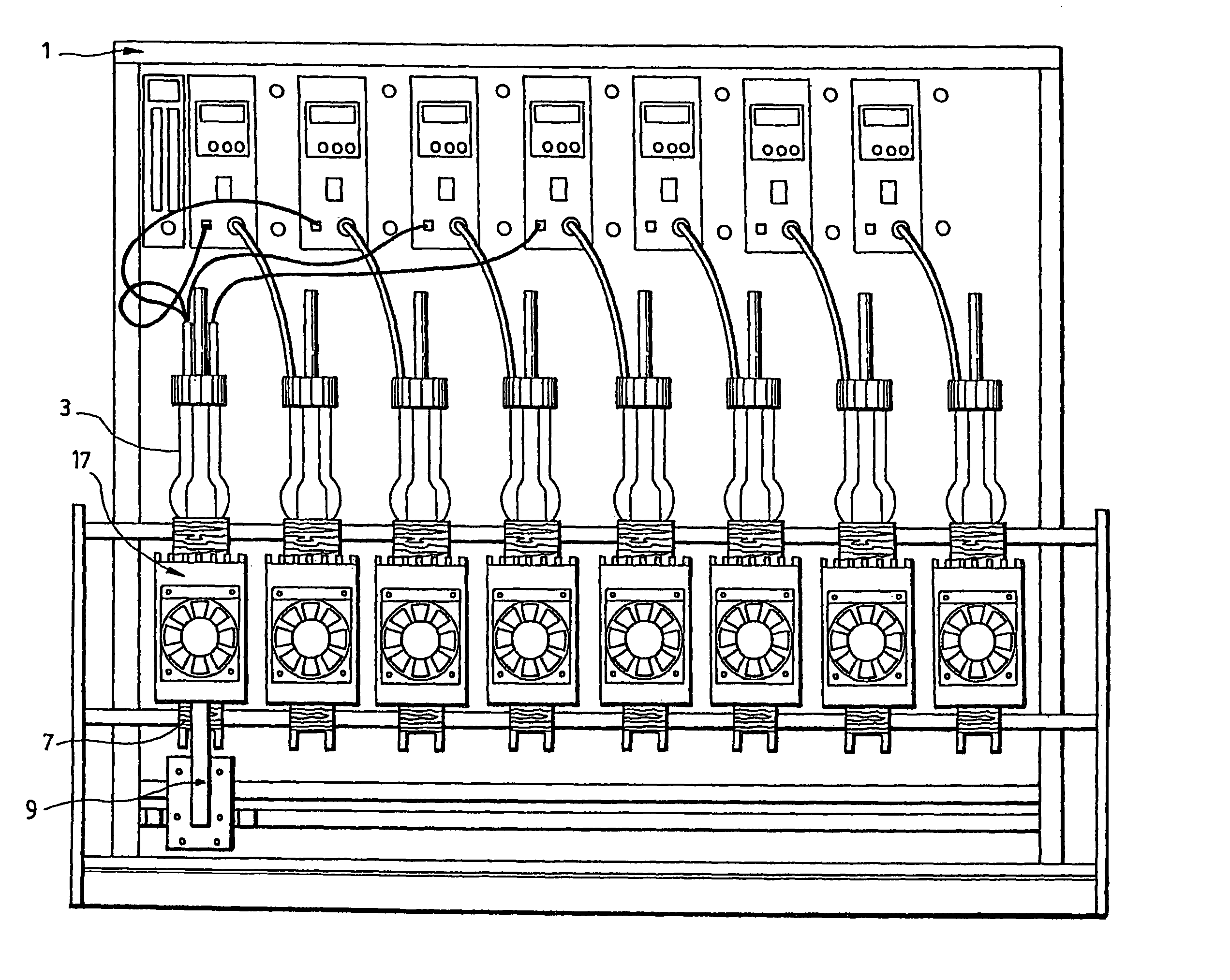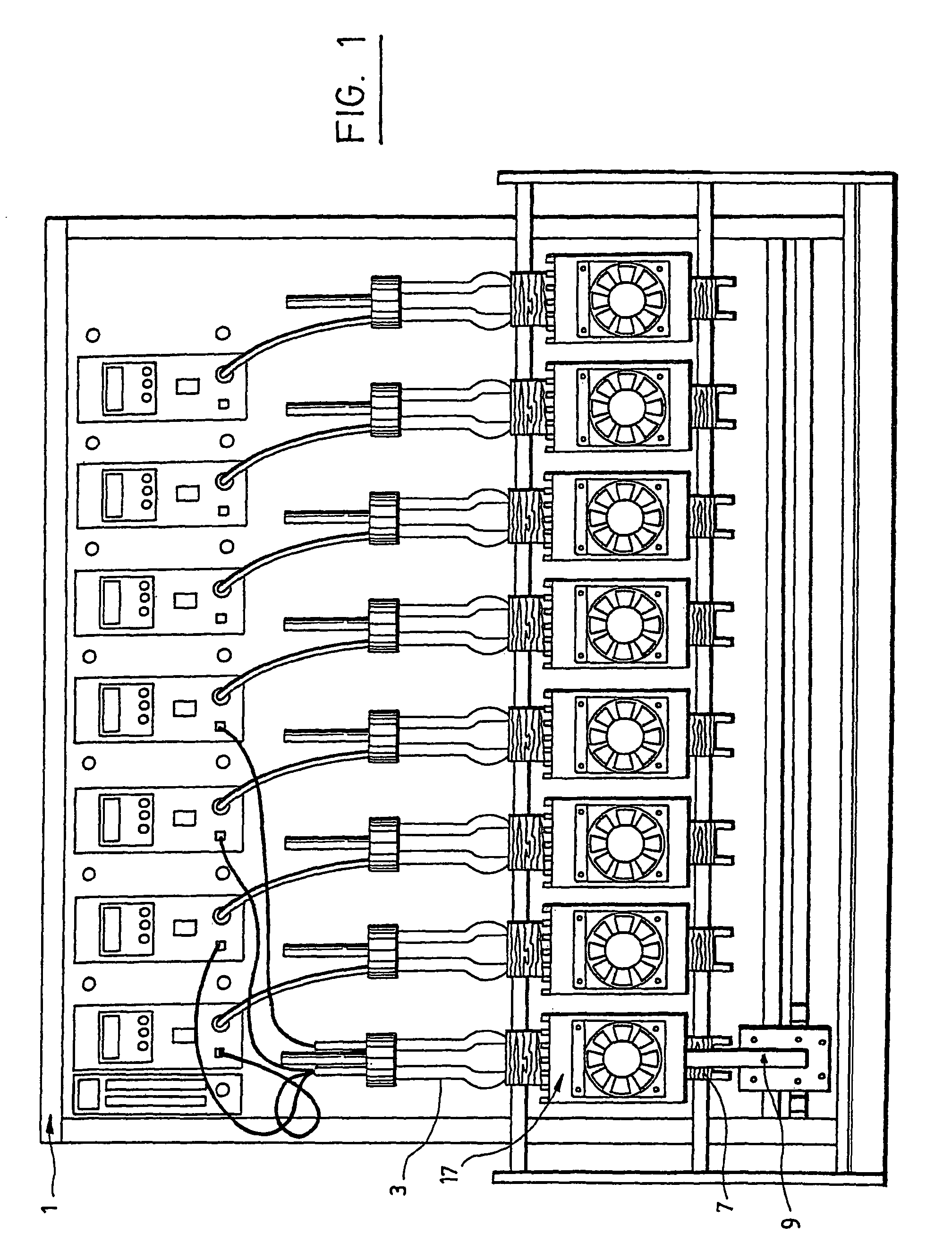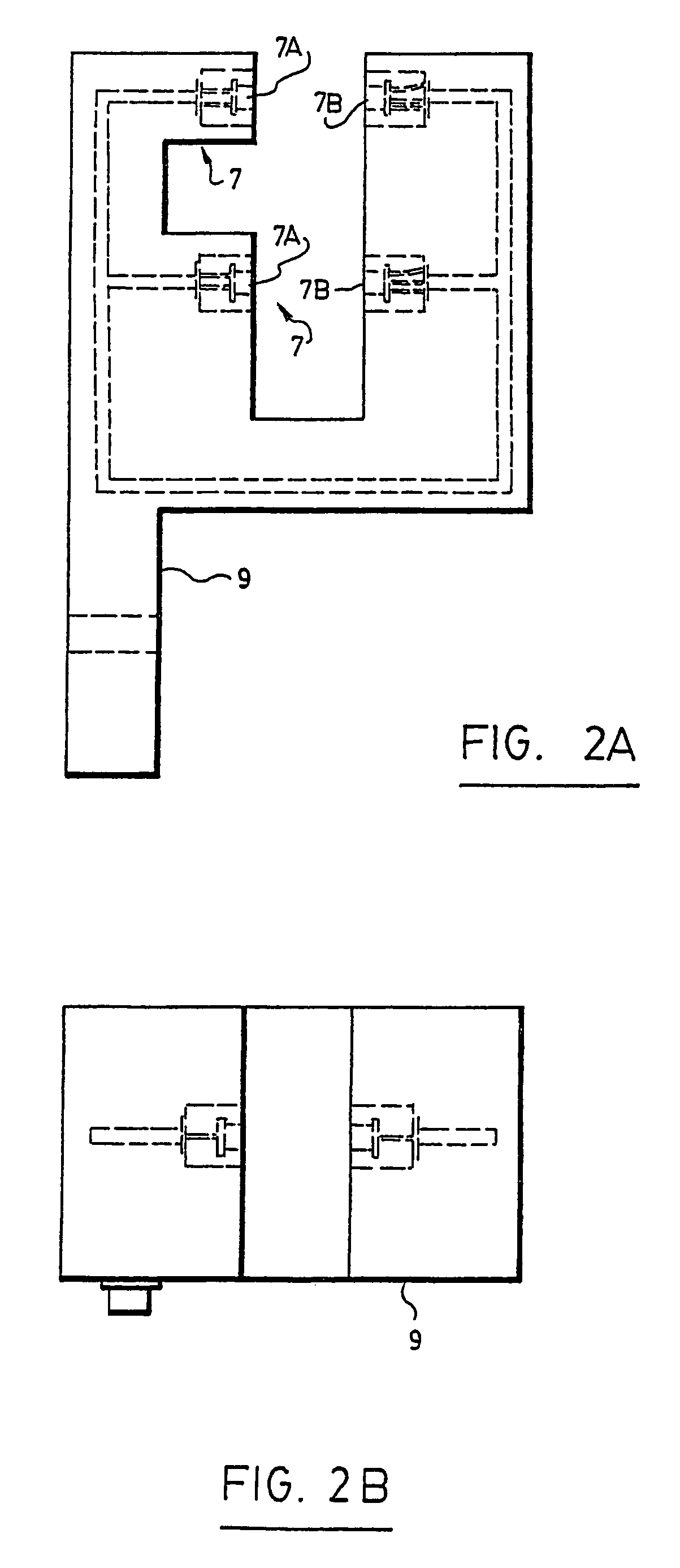Robotized platform for cell cultures in miniature reactor batteries, equipped with a system for real time measurement of cellular turbidity or other optical properties
a robotic platform and miniature reactor technology, applied in biochemistry apparatus, biochemical apparatus and processes, withdrawing sample devices, etc., can solve the problems of numerous standardization and reproducibility problems, inability to monitor and regulate, and inability to optimal growth conditions, etc., to achieve accurate measurement, reasonable cost, and accurate measurement
- Summary
- Abstract
- Description
- Claims
- Application Information
AI Technical Summary
Benefits of technology
Problems solved by technology
Method used
Image
Examples
Embodiment Construction
[0058]FIG. 1 shows a cell culture platform 1 according to a preferred embodiment of the present invention. The platform 1 lies on the original concept of the miniaturization and automation of microbial cultures, with a low volume (60 ml), achieved in micro-fermentors 3. Preferably, the platform 1 comprises a battery of eight micro-fermentors 3, but such a number might vary depending on the applications or the needs, as well as the volume of each micro-fermentor 3.
[0059]The body of the micro-fermentors 3 can be made of reactors manufactured in glass tubes 5 (see FIGS. 9A and 9B) with a 2 cm square section, being 16 to 18 cm high, provided with headers connected to pipes allowing for the flow of liquid and gas fluids. The glass tubes 5 should normally be sterilized before each new use. Such glass tubes could also be replaced by ready to use, one-way plastic sterile reactors, for example, in polycarbonate.
[0060]The micro-fermentors 3 are assembled in batteries within a compact and ergo...
PUM
| Property | Measurement | Unit |
|---|---|---|
| volume | aaaaa | aaaaa |
| temperature | aaaaa | aaaaa |
| volumes | aaaaa | aaaaa |
Abstract
Description
Claims
Application Information
 Login to View More
Login to View More - R&D
- Intellectual Property
- Life Sciences
- Materials
- Tech Scout
- Unparalleled Data Quality
- Higher Quality Content
- 60% Fewer Hallucinations
Browse by: Latest US Patents, China's latest patents, Technical Efficacy Thesaurus, Application Domain, Technology Topic, Popular Technical Reports.
© 2025 PatSnap. All rights reserved.Legal|Privacy policy|Modern Slavery Act Transparency Statement|Sitemap|About US| Contact US: help@patsnap.com



